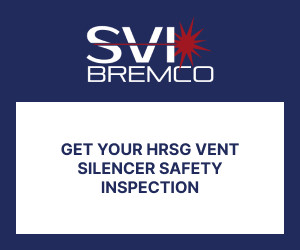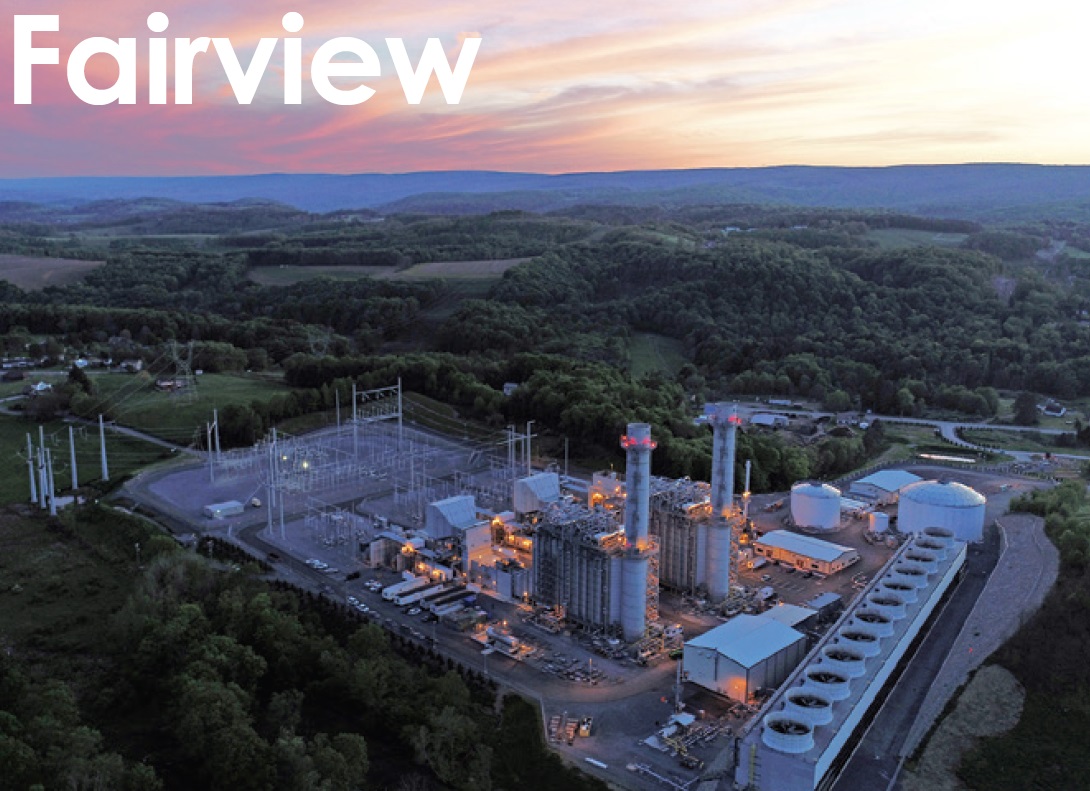
Fairview Energy Center
Owned by Competitive Power Ventures, Osaka Gas, and DLE
Operated by NAES Corp
1050 MW, gas-fired 2 × 1 7HA.02-powered combined cycle located in Johnstown, Pa
Plant manager: Irvin Holes
Relocating sample cooling panel makes plant safer
Challenge. It didn’t take long for O&M technicians at Fairview Energy Center to realize the difficulties that came with performing routine maintenance tasks on the steam sampling system. This system, which is in a 10 × 30-ft enclosure, is equipped with coolers, filters, flow meters, and analyzers used to monitor the steam quality and drum chemistry of both HRSGs.
The compact space with limited access posed several safety challenges—such as exposure to high temperature and pressure, hot surfaces, and hand traps. Of special concern was the building’s limited egress given the amount of high-pressure/high-temperature piping squeezed into the small sampling-system enclosure. How would one quickly escape in the event of a major steam leak?
In addition to the hazards mentioned, the lack of double isolations on incoming sample lines presented a major hurdle when trying to isolate and lock-out equipment. To prepare for what should have been a simple maintenance task, an extensive LOTO was needed to isolate the entire system to ensure that adequate double-block-and-bleed protection was provided to protect technicians. Occasionally, a plant shutdown was required to adequately isolate the leaking components.
The resulting LOTO consisted of more than 50 isolation points located across various levels of each HRSG that took multiple personnel more than four hours to hang and verify—a daunting task for what should have been a simple maintenance task involving a single set of double-block-and-bleed isolations.
Solution. After talking through options with the sampling-panel manufacturer, it was decided to use an external panel to house the primary coolers and include a set of double-block-and-bleed isolation valves on each incoming sample line.
Moving this hazard to a remote panel located just outside the sample room (Fig 1) would eliminate the need to bring high-pressure/high-temperature fluid into the congested sampling room.
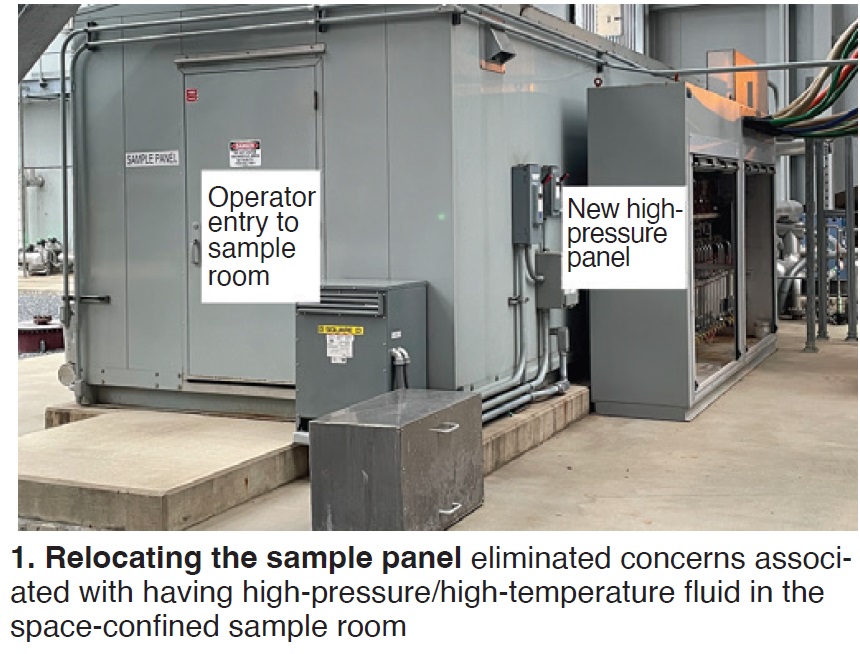
The insulated enclosure was equipped with two roll-up access doors and an electric heater for freeze protection. This option allowed locating the new panel close to the existing sample-line penetrations through the fixed enclosure, making for a quick and easy transition and allow the job scope to fit within the allotted outage window.
Results. With the primary coolers now located outside the sampling room, the temperature and pressure of samples entering the original enclosure are greatly reduced, thereby minimizing the risk to the technicians who routinely perform maintenance and take chemistry samples. The noticeably lower ambient temperature inside the enclosure provides a more favorable environment for the analyzers with the added benefit of reducing the burden on the HVAC system and giving the system a larger design margin.
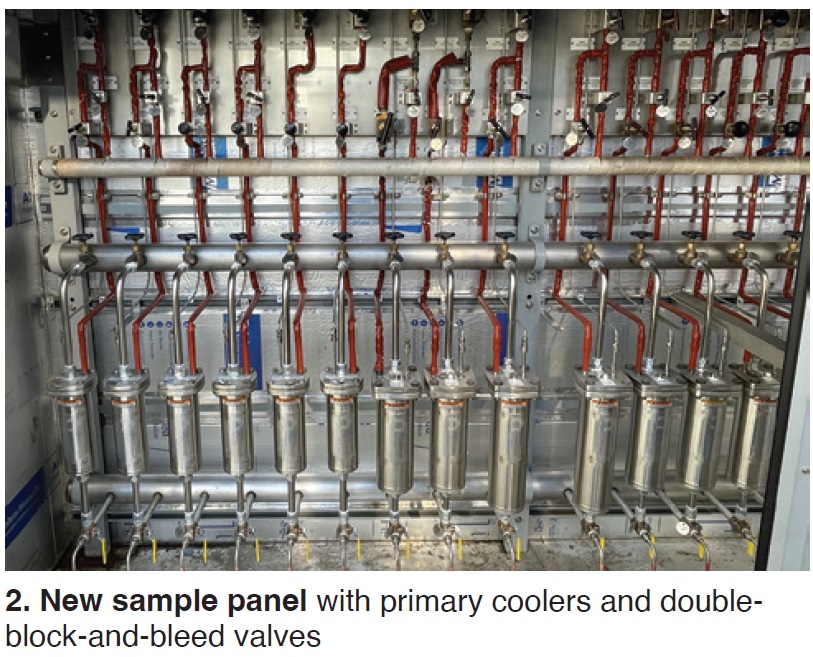
The space freed-up by relocating the primary coolers has provided a much safer access to the secondary coolers and inline filters still located inside the original sample enclosure, lessening the potential for hands to get trapped and minimizing pinch points. Access to the double-block-and-bleed isolation valves in the external panel (Fig 2) has made isolating the system for repairs much safer and less time-consuming, resulting in less down time for the plant and minimizing the number of man hours involved in the LOTO process, without sacrificing the safety of technicians.
Project participants:
Phil Christopher, I&E technician (NAES)
Scott Misiura, O&M technician (NAES)
Jim Amos, O&M technician (NAES)
Curtis Speer, lead CRO (NAES)
Engineering team: Jeff Lellock (NAES) and CPV’s Joe Michienzi and Preston Patterson
Signage to assist plant visitors, emergency personnel
Challenge. At Fairview Energy Center’s main entrance, visitors are greeted by the control room operator (CRO) via an intercom system. Visitor verification and purpose confirmed, guests are directed to the location required. It can be challenging for the CRO to describe routes and landmarks around the plant, especially to first-time or infrequent visitors. This burden on the operator is compounded during outages and times of high-volume traffic, and magnified during an emergency situation.
Following a recent sitewide emergency drill with local emergency response teams, the suggestion was made to add signage to the plant to help in the coordination of emergency responders. The recently commissioned site had no efficient means for directing responders to the proper location or effectively identifying hazardous situations or hazardous areas within the plant.
Solution. Several factors were considered when developing routes around the plant, such as which visitors most often needed guidance, and what locations were most frequented or most difficult to direct someone to. After deliberation, three of the most common routes were mapped out in color-coded fashion: Green arrows direct traffic to the main administration building’s visitor parking lot, blue arrows direct contractors to a designated contractor parking area, and orange arrows direct chemical deliveries to the chemical unloading area (Fig 3).
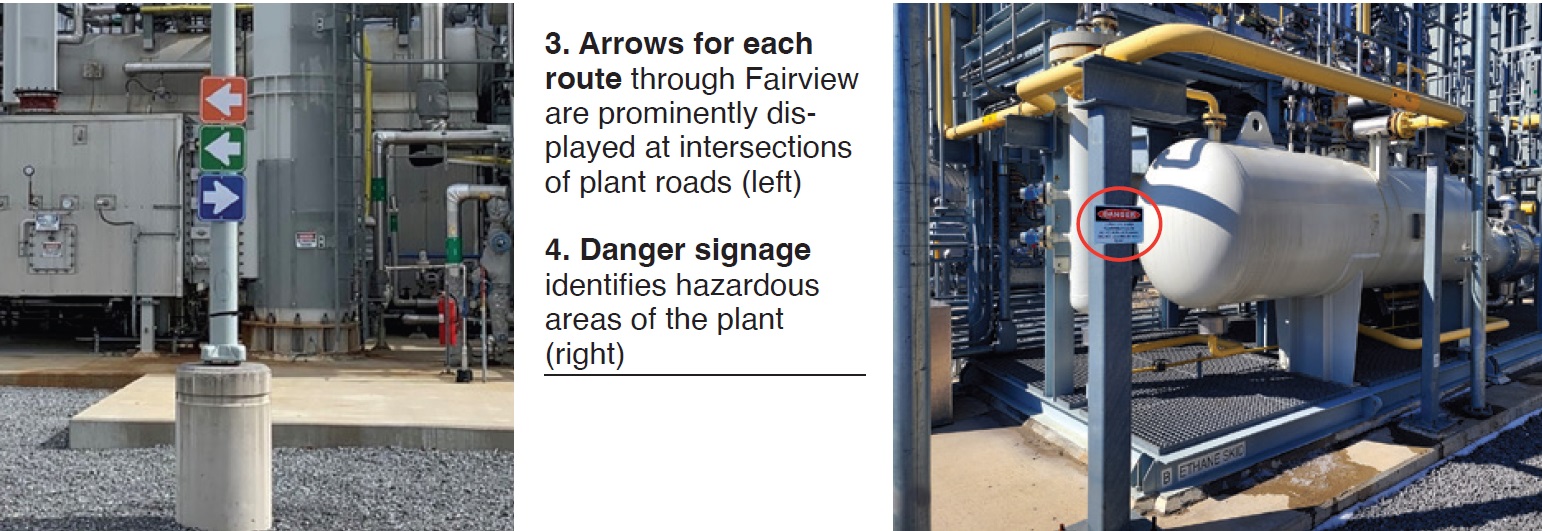
Additionally, areas presenting a flammable hazard are identified to warn drivers against prolonged engine idling and prohibit contractors from performing any type of hot work without a permit (Fig 4).
Results. Directional arrows and signs for each route’s destination were procured and installed along the plant’s roads (Fig 5). The signs chosen are of high-quality aluminum with a reflective surface suitable for roadway use, and visible at night. Existing lighting poles and structural columns were used as the mounting point for most signs to avoid additional posts and to maintain a cleaner look. All signs were positioned at a height which would easily be visible to drivers in personal and commercial vehicles.
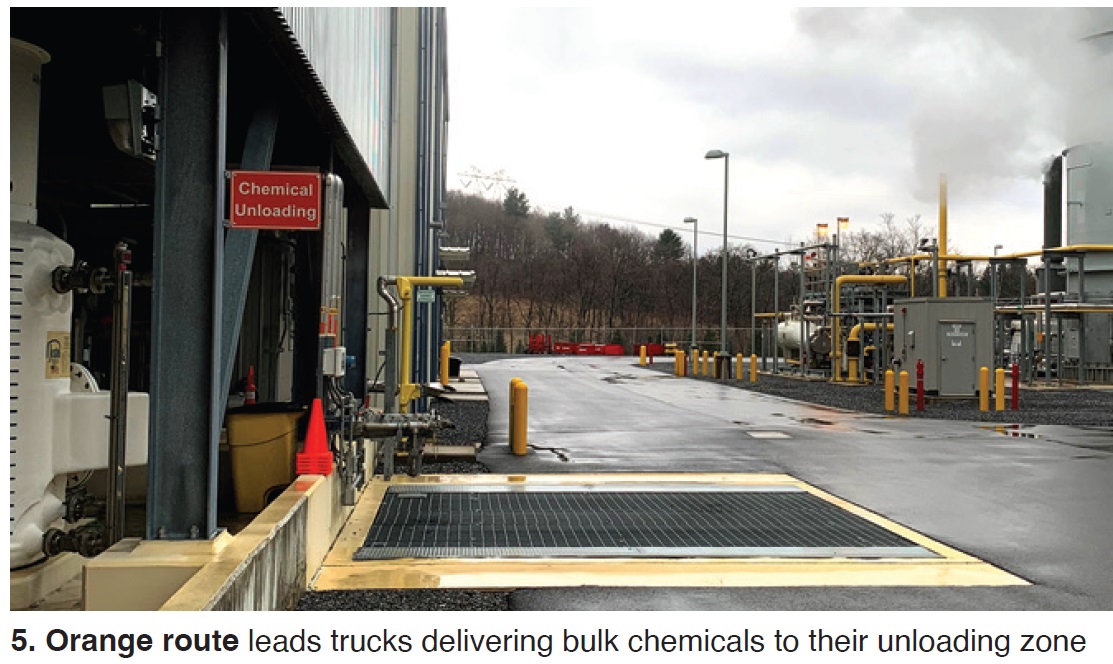
This project has been an excellent aid to the CRO when giving directions to visitors at the main entrance. By instructing each visitor to simply follow the green, orange, or blue arrows to their respective destinations, the time devoted to gate communication has been greatly reduced. The well-marked and simplified routes make it easier for drivers to locate different areas of the plant, prevent miscommunication over the intercom, and negate the need to remember any potentially confusing directions after entering the plant.
Project participants:
Joe Naugle, CRO (NAES)
Greg Kilgore, CRO (NAES)
Joel Wantiez, CRO (NAES)
Shawn Simmers, EHS coordinator (NAES)




